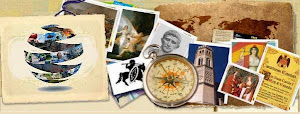Concept and What is: Espectrofobia
Espectrofobia also referred to as fasmofobia, is a psychiatric disorder characterized by irrational fear of ghosts (immaterial appearance) or spectra. Espectrofóbicos individuals have an aversion to all kinds of movies and pictures that may be related to ghosts, spirits and hauntings, and avoid at all costs to enter places such as cemeteries, dark woods, abandoned houses, caves, where they imagine that these beings possess ability to do harm, even kill. Many believe that this disorder can be caused due to a fact that occurred in the past, from which the individual witnessed or imagined the apparition of a ghost, or for having been impressed with any film, history of any known or even TV show.
A simple curtain moving or any movement that is out of focus of vision can create a strong delusion to espectrofóbicos that this is a ghost. The panic and dread felt by them are immense and many even pass out. Symptoms such as tachycardia, sweating, chills, tremors, dry mouth, nausea, stomach pain, difficulty articulating words or phrases, are the most common, however, vary from individual to individual. Any noise that sounds strange, a pen that moves due to the strength of the wind, the barking of dogs in directions where there is nothing, it is cause for the espectrofóbicos having a panic attack.
It is normal to hear reports of people feel afraid of spirits, since a large part of the population believes they exist. However the espectrofóbicos feel fear to the point of harming their lives. Many of them can't stand to be alone, because they believe are vulnerable to the attack of spirits, especially at night. This type of specific phobia is very common in adolescents.
The treatment of this disorder is based in psychotherapy, where the patient will have all the tools to deal with your problem. Learn self-help techniques to relieve and control symptoms of phobia, how relaxation techniques and breathing control. Hypnosis sessions also has had satisfactory results. The psychiatrist may prescribe to patients medications to control the anxiety (antianxiety drugs).

A simple curtain moving or any movement that is out of focus of vision can create a strong delusion to espectrofóbicos that this is a ghost. The panic and dread felt by them are immense and many even pass out. Symptoms such as tachycardia, sweating, chills, tremors, dry mouth, nausea, stomach pain, difficulty articulating words or phrases, are the most common, however, vary from individual to individual. Any noise that sounds strange, a pen that moves due to the strength of the wind, the barking of dogs in directions where there is nothing, it is cause for the espectrofóbicos having a panic attack.
It is normal to hear reports of people feel afraid of spirits, since a large part of the population believes they exist. However the espectrofóbicos feel fear to the point of harming their lives. Many of them can't stand to be alone, because they believe are vulnerable to the attack of spirits, especially at night. This type of specific phobia is very common in adolescents.
The treatment of this disorder is based in psychotherapy, where the patient will have all the tools to deal with your problem. Learn self-help techniques to relieve and control symptoms of phobia, how relaxation techniques and breathing control. Hypnosis sessions also has had satisfactory results. The psychiatrist may prescribe to patients medications to control the anxiety (antianxiety drugs).
Published for educational purposes
